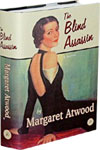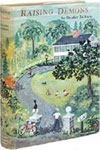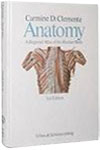Kuan Currency Note; Chinese Printed Paper Currency
[Currency]
From
Biblioctopus, Los Angeles, CA, U.S.A.
Seller rating 5 out of 5 stars
![]()
AbeBooks Seller since 20 November 2013
About this Item
Description:
1 Kuan note manufactured under Hongwu (Zhu Yuanzhang), the first Ming Emperor. Block printed, in black ink, on gray mulberry paper, from a series of the earliest numismatic, printing on paper, and the earliest obtainable commercial printing on paper, 2 generations before Gutenberg (but 700 years after any printing on paper and 500 years after the first block printed book), and it is the largest paper money ever issued (8 3/4" X 13 3/16"). Small nicks and tears at the edges, all are natural paper flaws to 14th century paper making, and all are outside the borders, the red seals a little faded but it s PMG (the leading assessor of currency) slabbed and graded "Very Fine 35" and thus certified as unrepaired (important) and authentic (more important), over and above dispute. The Chinese text at the top reads "Da Ming tong xing bao chao" (right to left, in regular K ai Shu style), translating as "Great Ming Circulating Treasure Note." Below this the denomination is printed in 2 characters "yi guan" translating as "one string" (the equivalent of 1,000 copper cash), and there is a string of 1,000 copper coins pictured, arranged in 10 groups of what are meant to be 100 coins, then worth 1 tael of purse silver or 1/4 tael of gold. The center is flanked by 8 Chinese characters "Ta Ming Pao Ch ao, Tien Hsia T ung Hsing" (in Chuan Shu style), translating as "the Great Ming note circulates everywhere." Below that are instructions for use and a threat to execute forgers. The outer surrounding frame is ornamented with dragon patterns, and overprinting all, are 2 red (vermilion) handstamps, one on each side, having the function of signatures on modern banknotes (the reverse one is the imperial seal). Here is an ancient banknote, from a nation that has long prided itself on advanced science, but seemingly determined to connect that science to its primal heredities, so (for example) they have just bred a man with a rabbit to produce a human with a lucky foot. Ref: Pick AA10 S/M#T36 20. China was the first country to use paper money (credit currency). They first tested it, regionally, in the late 10th century, with notes limited by time. A national issue, state backed by gold or silver, began in 1265, and our note is among the oldest examples now available whole, as earlier examples are mainly seen in fragments lightly scattered in museums, university libraries, and their kin. Marco Polo saw the forerunner of our paper money in the 13th century, referring to it as "flying money" and he likened the ability to print money (that was equal in commerce to gold) as alchemy. Here are Polo s own words, translated from his Book of the Marvels of the World: "All merchants arriving from India, or other countries, and bringing with them gold or silver or gems and pearls, are prohibited from selling to anyone but the emperor. He has 12 experts chosen for this business, men of shrewdness and experience in such affairs; and these appraise the articles, and the emperor then pays a liberal price for them in those pieces of paper [money]. The merchants accept his price readily, for in the first place they would not get so good a one from anybody else, and secondly, they are paid without any delay. And with this paper money they can buy what they like anywhere over the Empire, whilst it is also vastly lighter to carry about on their journeys. And it is a truth that the merchants will several times in the year bring wares to the amount of 400,000 bezants [a gold coin associated with Byzantium] and the Grand Sire pays for all in that paper. So, he buys such a quantity of those precious things every year that his treasure is endless, whilst all the time the money he pays away costs him nothing at all. Moreover, several times in the year proclamation is made through the city that anyone who may have gold or silver or gems or pearls, by taking them to the mint shall get a handsome price for them. And the owners are glad to do this, because they would find no other purc. Seller Inventory # 937
Bibliographic Details
Title: Kuan Currency Note; Chinese Printed Paper ...
Publisher: Ming Emperor Hongwu, China
Publication Date: 8211
Condition: very fine
AbeBooks offers millions of new, used, rare and out-of-print books, as well as cheap textbooks from thousands of booksellers around the world. Shopping on AbeBooks is easy, safe and 100% secure - search for your book, purchase a copy via our secure checkout and the bookseller ships it straight to you.
Search thousands of booksellers selling millions of new & used books
New & Used Books
New and used copies of new releases, best sellers and award winners. Save money with our huge selection.
Rare & Out of Print Books
From scarce first editions to sought-after signatures, find an array of rare, valuable and highly collectible books.



